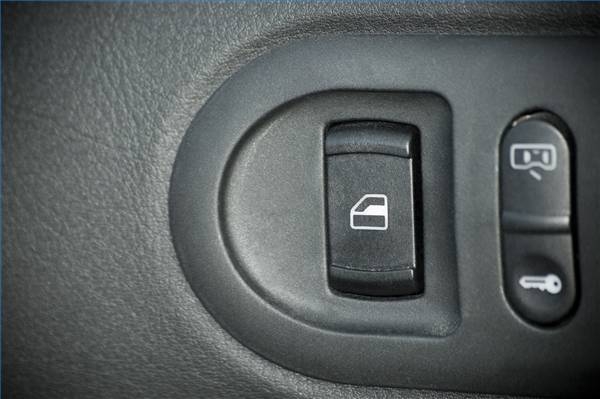
There are only a few main components of a power door lock system. Inside the car door, approximately behind the exterior door handle, is a metal latch that is the actual component that keeps the car door shut. A metal rod protruding from the bottom of the latch is connected to an actuator, which is a small motor that moves the latch up and down. Another metal rod protruding from the top of the latch is connected to the door lock button that sticks up at the top of the door. The exterior door handle is connected to a metal rod inside of the car door, but this rod engages with the latch only if the latch is in the "up" position. If the knob on the top of the door is pushed down or if the actuator is powered on to lower the latch, the rod connected to the door handle will disengage from the latch and will not be able to open the door.
The actuator is the part of the power door lock system that makes it "powered." It has a metal or plastic exterior body, and its contents consist of a small electric motor, a series of gears and a small rack and pinion gear assembly. Electrical wires on the actuator's exterior connect it to both the car's primary power source and its computer system. When the computer system sends a signal to lock or unlock the door, it allows power to flow to the actuator. This makes the electric motor turn, which then causes a series of interlocking gears to turn along with it. The gears connect to a small, plastic rack and pinon assembly, which translates the cyclical movement of the gears to the back-and-forth movement of a plastic rod. When this rod moves up, it forces both the latch and the door lock knob to move up. When the rod moves down, it lowers the latch and the door lock knob.
On most modern cars, all door locking and unlocking signals are initially fed into the car's computer. Electrical wiring in the car connects the computer to the door's keyhole and to all electrical door lock switches inside the car. If the power door lock system is synced with a remote, that remote sends its electronic signal to the computer. The computer interprets signals from all of these sources as commands to either lock or unlock the doors. When it receives a signal to perform these actions, it sends the proper type of command to the power source connected to the actuator. One type of command will turn the actuator's motor one direction, locking the doors, and the other type will turn it in the other direction, unlocking the doors.